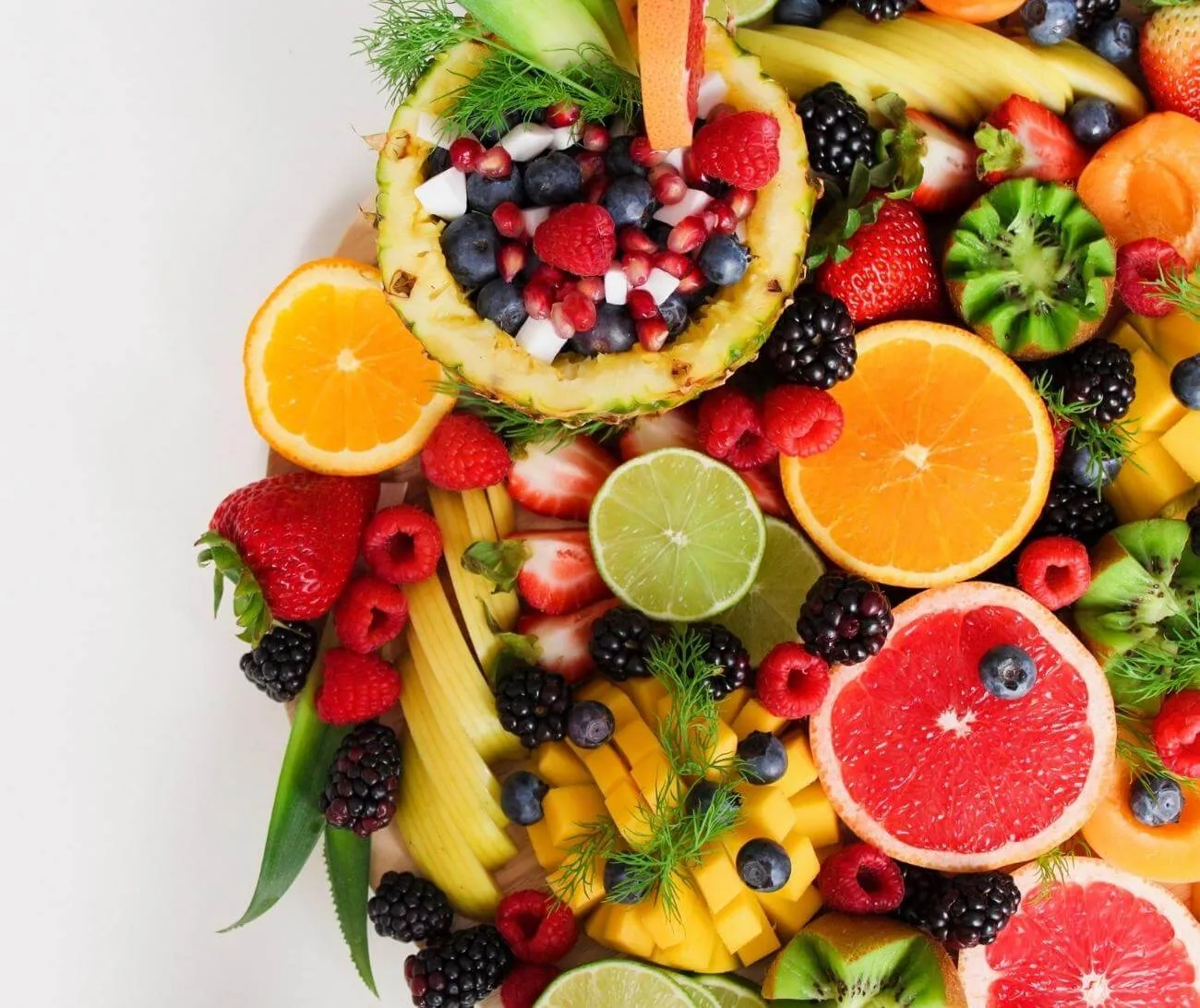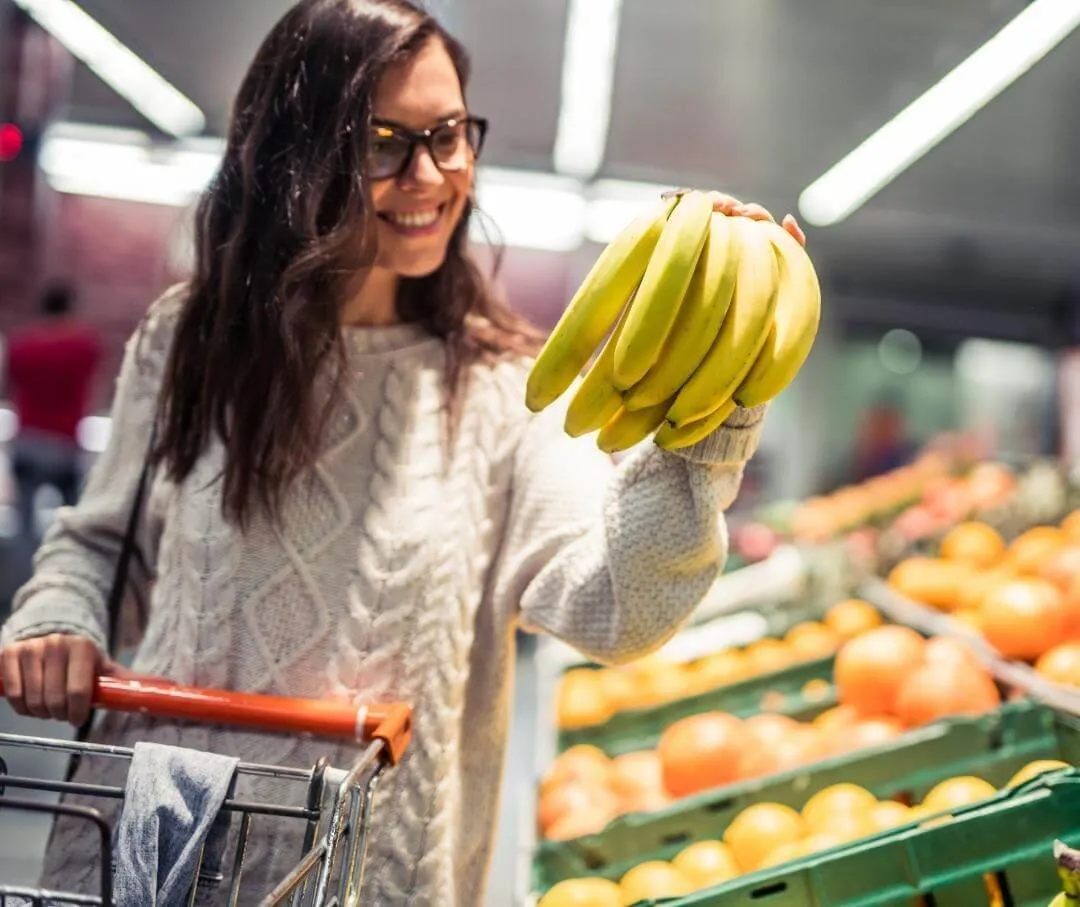Think of fruit as Mother Nature's candy. They're delectably sweet yet offer plenty of vitamins, minerals, and other essential nutrients that support your overall health. Many fruits are especially rife with fiber and potassium, two nutrients most Americans are seriously lacking in their diets. Fruit is also a great source of fiber, a type of non-digestible carb that helps keep you satiated, stabilizes blood glucose levels, and even aids in body weight loss. Still, given all fruits' health benefits, only about 12% of the population meets the daily fruit intake recommendation (which is set at 1.5 to 2 cups each day).1 2
While all fruit can and should be included as part of a healthy, balanced diet, some fruits have a slight edge over others when it comes to weight loss. You'll want to choose fresh fruit over their dried counterparts because the sugar and calories in dried fruit are significantly more concentrated. Since they're lower in sugar and higher in dietary fiber, fresh fruits have a lower glycemic index (GI) than dried ones, so they won't spike your blood sugar as much.
If you want to shed some body fat, look to these low-sugar fruits to help you crush that sweet tooth and add plenty of nutrients to your day. Most of these fruits are low on the glycemic index (GI) and score under 55.
{{mid-cta}}
20 Weight Loss Fruits You Should Consider

1. Grapefruit
Orange's tart, tangier cousin, is low in sugar and high in fiber, which means it has a low GI. One whole grapefruit provides about 80 calories, 98% of your daily value (DV) of vitamin C, and 3 grams of fiber (10% of your DV). Research suggests that eating just half of a fresh grapefruit before meals is linked with weight loss and better insulin sensitivity. 3 4
2. Oranges
Oranges are a vitamin C powerhouse, with one fruit offering 77% of your DV for just about 60 calories. This citrus fruit is also relatively low in sugar, with 12 grams per fruit plus 3 grams of satiating fiber. So, it makes sense that it scores a low 35 on the glycemic index. If fat loss is your goal, opt for eating oranges whole rather than sipping on OJ. Unlike whole fruit, fruit juice is devoid of any fiber, which is a key nutrient for satiety and curbing cravings later on in the day.
3. Berries
Berries are some of the highest-fiber fruits you can find; plus, they're low in carbohydrates and sugar, ranking them low on the GI scale. A half cup of raspberries packs an impressive 4 grams of fiber (14% of your DV) for just 32 calories and 3 grams of sugar, while a half cup of blueberries gives you 2 grams of fiber (6% of your DV) for 42 calories and 7 grams of sugar. Berries are also a rich source of antioxidants associated with a reduced risk of obesity, diabetes, cancer, and other health problems. Toss some fresh or frozen mixed berries into a Greek yogurt parfait or a smoothie with your favorite protein powder for a balanced, filling snack or meal that'll put the sweet tooth to bed. 5
4. Papaya
Papaya is a yellow-orange tropical fruit with an almost creamy texture, making it great in salads, diced into a salsa, or blended with yogurt and milk for a rich drink. A cup of papaya packs 2.5 grams of fiber (9% of your DV) for just 11 grams of sugar and 60 calories. It also contains carotenoids, plant pigments that give papaya its rich orange hue and are converted to vitamin A in the body. One cup of papaya has 8% of your DV for vitamin A, which supports your heart health, immune system, and vision. 6
5. Cherries
Cherry season spans from late spring to early summer, so you'd better get your hands on a bunch during those warmer months. Cherries are high in antioxidants and are low-glycemic, with 2 grams of fiber and 10 grams of sugar per half-cup serving. Snack on a handful of cherries on their own or add them to a salad with tangy feta or goat cheese and mixed greens.
6. Stone Fruits
Stone fruit is an umbrella term for fruits with a stone (or pit) in the center. Some low-sugar, low-GI stone fruits include peaches, nectarines, apricots, and plums. These seasonal picks are a great source of fiber, which can support your gut health and help prevent overeating. Peaches and apricots are especially great on the grill, as their natural sugars caramelize, and they gain a depth of flavor that pairs nicely with grilled proteins.
7. Pineapple
While pineapple isn't as low in sugar as other options on this list, this tropical tart-sweet fruit can support your weight-loss goals thanks to its high water content. It's 86% water, so it helps keep you hydrated and promotes a feeling of fullness. Pineapple also contains bromelain, an enzyme that can help your body digest protein and may even help quell inflammation and aid in pain management. 7
8. Acai
Odds are you won't find this fruit in the fresh produce aisle of your grocery store, but you'll likely spot it sold in packs in the freezer section. Acai is a type of berry native to Central and South America, and it's sky-high in fiber and antioxidants and low in sugar, a winning combo for warding off weight gain. When buying acai from the supermarket, always check the nutrition label on the packaging and choose a brand that doesn't contain any added sugars.
9. Dates
Dates have a low GI and are brimming with nutrients, including fiber and potassium. Potassium is an essential mineral that helps your body get rid of sodium, helping to lower your blood pressure. Since they are higher in sugar, enjoy dates in moderation.
One study found that people living with type 2 diabetes who ate three dates a day had lower cholesterol levels and increased HDL (good) cholesterol. Researchers also noted that the daily date snack didn't raise the participants' HbAlc levels. 8
<p class="pro-tip"><strong>Also Read: </strong><a href=fruits-vegetables-colors>How Eating the Rainbow Can Benefit Your Health + How to Do It</a>.</p>
10. Honeydew
Honeydew's light-green flesh is sweet yet has a medium GI, and makes for the perfect sweet treat on any weight loss diet. One cup of honeydew has 61 calories, 14 grams of sugar, 34% of your DV for vitamin C, and 8% of your DV for potassium.
11. Cantaloupe
Cantaloupe has an almost identical nutritional profile to honeydew, but unlike its green-fleshed cousin, this orange melon is an excellent source of vitamin A. One cup provides 33% of your DV for the vitamin, plus 2 grams of fiber and 10% of your DV for potassium.
12. Kiwi
This sweet-yet-tart fruit is low in calories, high in fiber and vitamin C, and has a low GI. Although most folks scoop the flesh out, the fuzzy outer peel is edible and contains a good amount of fiber. Research shows that kiwi is a rich source of antioxidants and can help increase HDL cholesterol and decrease triglycerides and high blood pressure. 9
13. Lemon
While you may not think to bite into a lemon as a snack, this versatile citrus fruit is a smart addition to any healthy diet plan. One lemon gives you 8% of your DV for fiber and 49% of your DV for vitamin C. Squeeze this low-glycemic, low-calorie fruit onto salads or into a homemade dressing, or make your own lemon water to help jazz up plain H2O.
14. Apple
Apples are one of the most consumed fruits in the U.S., only second to bananas, and for good reason. One large apple has 5 grams of fiber (that's a staggering 19% of your DV), along with some vitamin C, potassium, and copper. But just like with oranges, it's best to enjoy apples whole rather than in juice form. Research shows that eating whole apples leads to a greater feeling of fullness than consuming the fruit as apple sauce or juice. 10, 11
15. Pomegranate
Although it might require a little extra work to extract the arils (or the edible seeds), the effort will be worth it. Pomegranates are a rich source of antioxidants, and one cup of seeds contains 7 grams of fiber (a quarter of your daily value!), 20% of your DV for vitamin C, and a boatload of B vitamins, including folate, B5, and B1. Sprinkle the seeds atop a salad for some sweetness and crunch, or toss a tablespoon over avocado toast for color.
16. Pears
Pears are among the highest-fiber fruits, offering 7 grams—or a quarter of your DV—per large pear. Their high fiber content deems them low-glycemic and safe for people with diabetes to consume. Chop up half a pear and layer it into overnight oats, or try roasting a whole pear until it's golden and top it with Greek yogurt for a delicious and nutritious dessert.
17. Avocado
Avocados are botanically a fruit because they contain a seed or pit. Rich and creamy avocados are a prime source of healthy fats, which are known to promote fullness and support cardiovascular health. Avocados pack nearly 20 vitamins and minerals, one of them being fiber—just a third of the fruit has 4.5 grams of fiber and less than 1 gram of sugar.
18. Figs
Figs may be sweet, but they're low on the GI scale because they're high in fiber. One large fig has 2 grams of fiber and less than 50 calories. Try slicing fresh figs and serving them along with brie or goat cheese for a snack that pairs blood sugar-stabilizing fiber and fats. Not to mention, the sweet and salty combo is bound to crush any post-dinner cravings.
19. Passion Fruit
Passion fruit may be rare at your local grocery store, but if you spot it, stock up. This South American fruit has a pulpy, gel-like interior that's sweet and tart. It's also an excellent source of fiber, providing 20% of your DV per three fruits.
20. Grapes
Grapes get a bad rap for being high in sugar, but they actually have a low GI, deeming them OK to eat in moderation. Grapes make for a smart swap for jelly and jam, so next time you're making a PB&J, consider skipping the preserves and topping your nut butter-slathered toast with sliced green or red grapes instead.
Using a CGM with Signos: Real-Time Data, Backed by AI
Signos pairs a real-time glucose biosensor with AI trained on tens of millions of data points to deliver personalized, science-backed guidance. See exactly how your body responds, and take action.
Learn how it works. Ready to get started? Join now.
Topics discussed in this article:
References
- https://www.cdc.gov/mmwr/volumes/71/wr/mm7101a1.htm
- https://extension.purdue.edu/county/floyd/hhs/hhs-education-papers/4-nutrients-of-concern.pdf
- https://myfooddata.com/
- https://pubmed.ncbi.nlm.nih.gov/16579728/
- https://www.sciencedirect.com/science/article/abs/pii/S1756464617305613?via%3Dihub
- https://ods.od.nih.gov/factsheets/VitaminA-Consumer/
- https://www.ncbi.nlm.nih.gov/pmc/articles/PMC3529416/
- https://www.ncbi.nlm.nih.gov/pmc/articles/PMC7019638/
- https://pubmed.ncbi.nlm.nih.gov/23746068/
- https://www.statista.com/statistics/477475/us-most-consumed-fruit-and-fruit-products-by-type/
- https://www.ncbi.nlm.nih.gov/pmc/articles/PMC7395742/




.svg)




.webp)





.svg)
.svg)
.svg)
.svg)
.svg)
.svg)
.svg)
